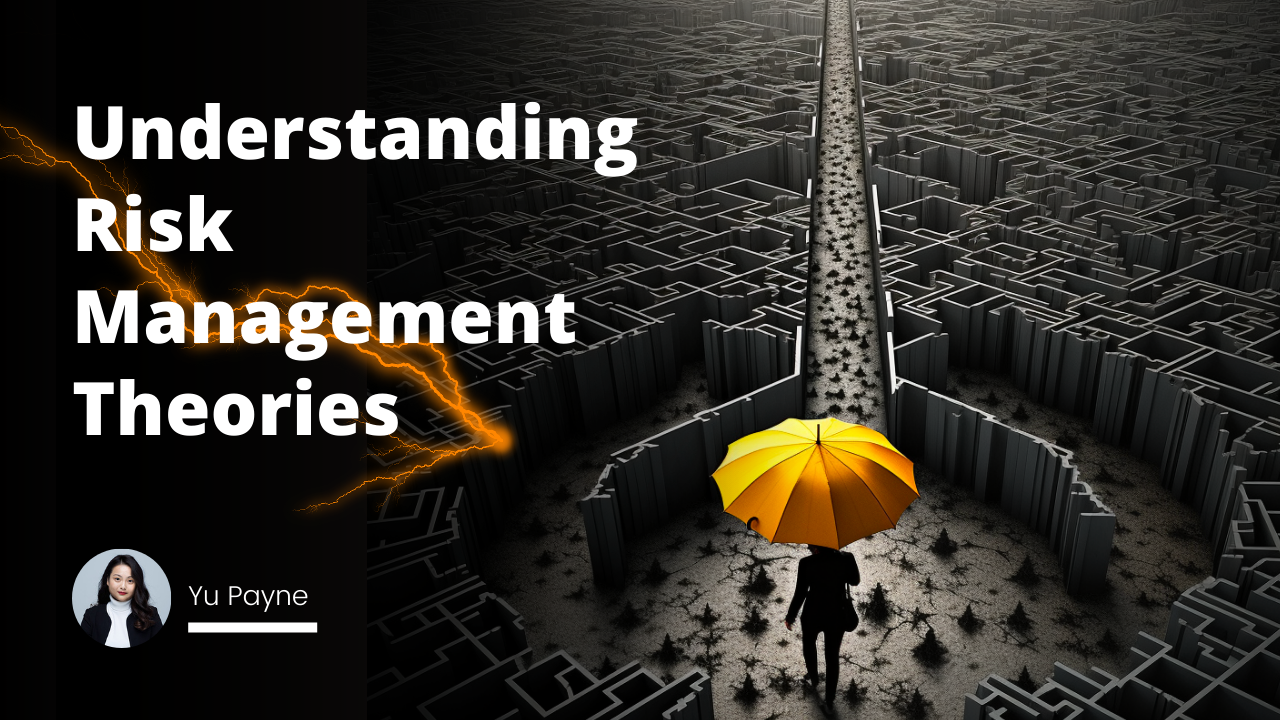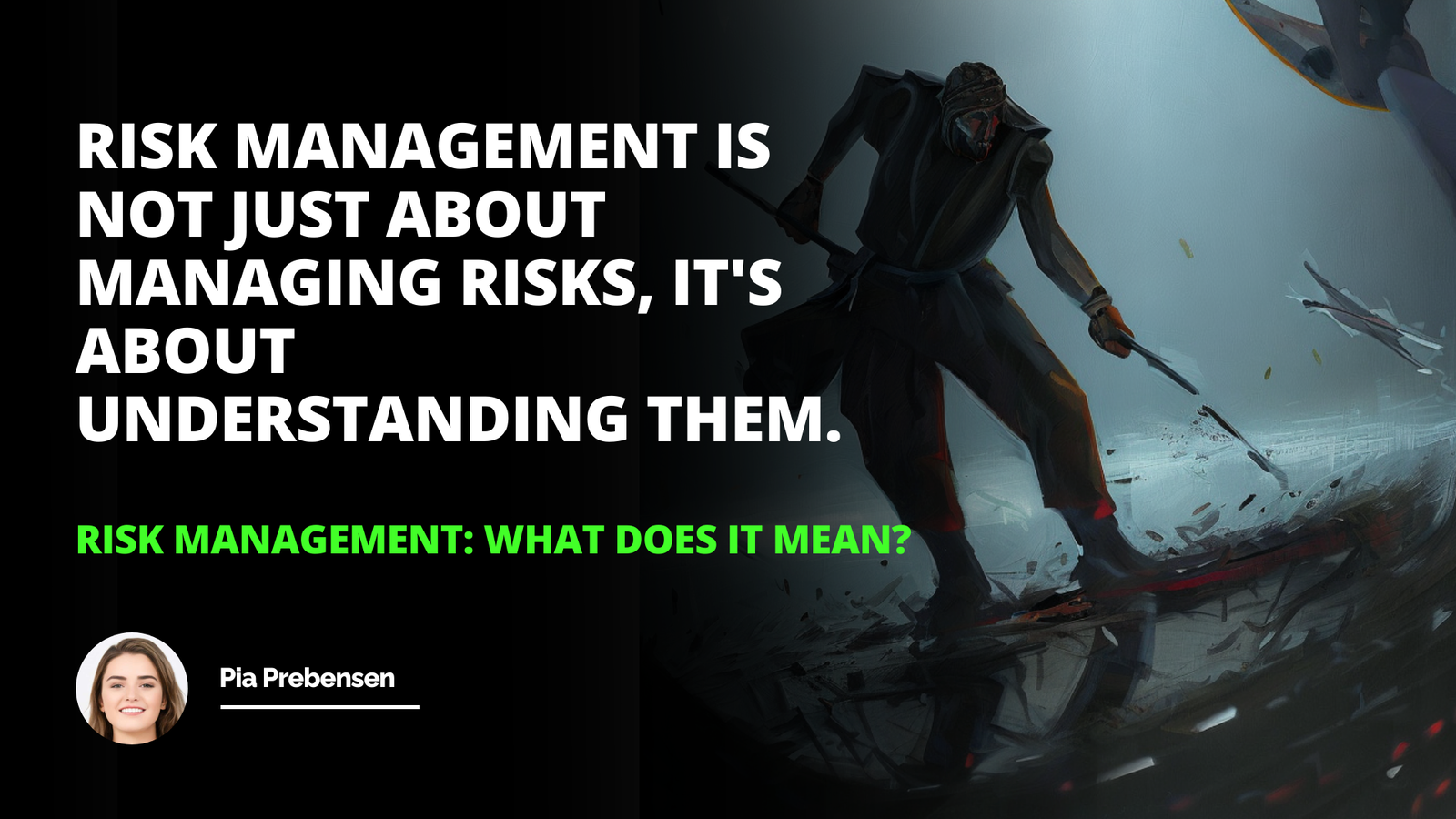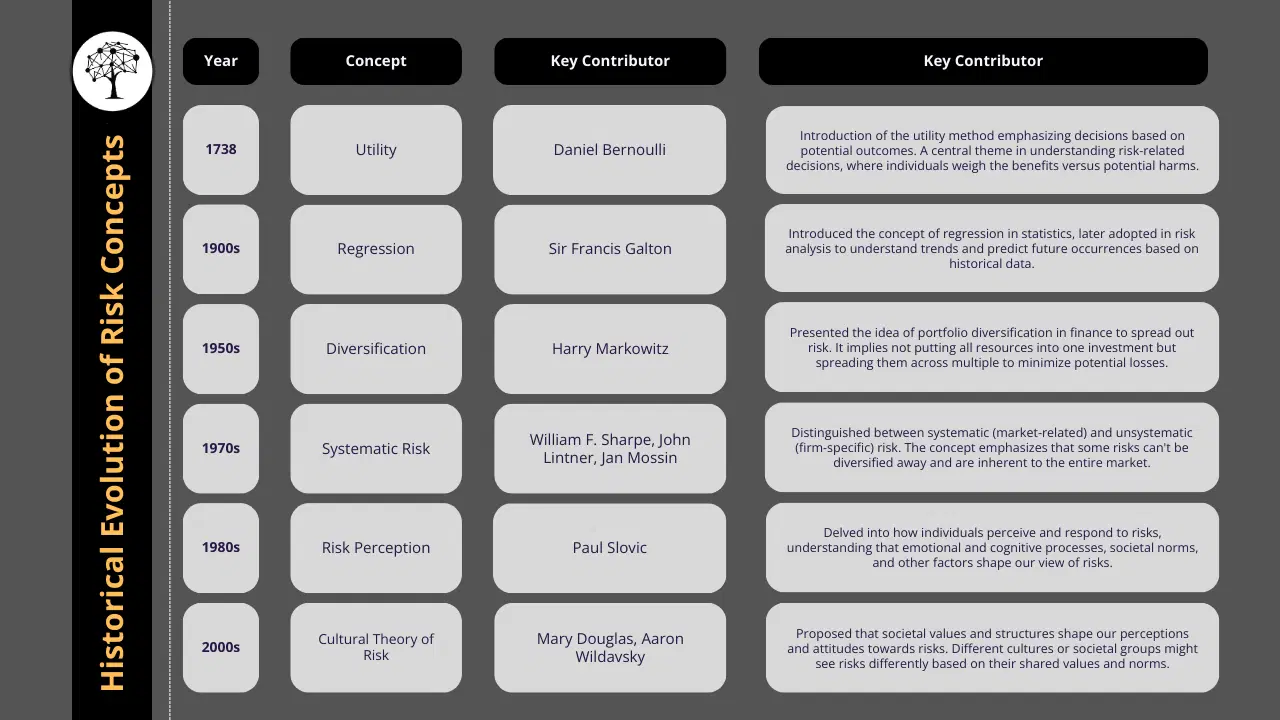
Risk is a concept woven into the fabric of our daily lives. Consider the theoretical concept of diversification in the financial realm; it is akin to an investor balancing assets to avoid potential pitfalls in the stock market.
Similarly, a farmer diversifying crops is applying a practical approach to the theoretical idea of risk mitigation, ensuring that not all is lost if one crop type fails due to unforeseen weather changes.
Delving deeper into theoretical concepts of risk, we realize that setting aside emergency savings or acquiring multifaceted skills are strategies grounded in risk prediction and management.
By grasping these theoretical underpinnings, we can navigate the uncertainties of life with a more informed and strategic mindset, paving the way for safer, more calculated decisions.
Article Index:
Understanding Risk: Definition and Importance
In contemporary economic settings, risk is often defined as the probability of a negative outcome occurring due to unforeseen events. This can range from financial losses to broader societal impacts. At its core, risk is about uncertainty and the potential deviation from what is expected or desired.
When further dissecting risk, we come across two primary categories: systematic and unsystematic.
Systematic risks, like interest rate changes or geopolitical events, affect entire markets or sectors. They are intrinsic to the total market and cannot be eradicated through diversification.
On the other hand, unsystematic risks are specific to individual businesses or investments. These can stem from company-specific events, such as management decisions or product failures, and can often be mitigated through diversification.
Risk does not just lurk in the shadows; it plays a pivotal role in influencing decision-making processes. Understanding and assessing risks can dictate investment strategies, product launches, or business expansion plans.
For individuals, risk assessment can guide life decisions, from buying a house to choosing a career path. Every choice we make is, in essence, a gamble in the face of uncertainty. However, by comprehending the theoretical aspects of risk, we equip ourselves to play the odds more astutely, aiming for outcomes that benefit us in the long run.
Primary Theoretical Concepts and Their Origin
As we dive into the theoretical concepts of risk, we find several vital concepts that have significantly shaped our understanding over the centuries.
Utility: At the forefront is the concept of utility. Introduced in 1738 by Daniel Bernoulli, utility theory revolves around the idea that every individual has a subjective value or satisfaction derived from a particular outcome.
It suggests that people make decisions based on the perceived utility or benefit they will gain rather than the objective value. In the context of risk, utility theory helps explain why individuals might opt for a guaranteed smaller reward over a riskier, larger one, given their unique risk aversions.
Regression: Moving forward to regression, it has evolved as a crucial tool in predicting risk. Regression analysis, in its essence, investigates the relationship between a dependent and one or more independent variables.
Risk management can be employed to predict potential losses or gains based on historical data, allowing businesses and individuals to make informed decisions. Its significance in risk prediction cannot be overstated, as it offers a quantitative method to assess potential future scenarios.
Diversification: Finally, diversification is one of the most practical concepts from theoretical risk understanding. Put, diversification is the strategy of spreading investments among different types of assets or sectors to minimize the impact of adverse events in any one area. This approach is rooted in the idea that individual investment risks can offset each other, reducing the overall potential for loss.
It resembles the age-old adage, "Do not put all your eggs in one basket." By spreading out investments, entities can cushion themselves against unforeseen market shocks, making diversification a cornerstone in risk mitigation strategies.
These theoretical concepts, born from keen observations and rigorous analysis, have laid the foundation for modern risk management practices. Their origin stories remind us of the evolution of thought and the continuous journey to refine our understanding in the face of an ever-changing world.
Approaches in Risk Theory
Scientific Approach: At its core, the scientific approach to risk involves using empirical data and quantifiable evidence. Risk assessment through this lens relies on objective measurements, statistical analyses, and evidence-based methodologies. It seeks to minimize subjectivity, ensuring decisions are rooted in facts and observable patterns.
For instance, scientific data on pollutant concentrations might be used in environmental risk assessments to predict potential health impacts. This approach aims to produce replicable and consistent results by employing the scientific method, giving it credibility in many professional sectors.
Psychological Approach: Human beings are not always rational actors, and this is where the psychological approach to risk comes into play. It acknowledges that our perceptions, biases, and emotions profoundly influence our understanding of and reactions to risks.
For instance, some individuals might perceive flying as incredibly risky due to fear, even though statistics consistently show it is one of the safest modes of transportation. Cognitive biases such as the availability heuristic, where people judge the probability of events based on how readily examples come to mind, play a significant role in this approach.
By understanding these biases and perceptions, risk managers can better predict human behavior in the face of potential threats.
Cultural Approach: Risk, at times, is as much a social construct as a statistical one. The cultural approach delves into how societal values, traditions, and norms shape our perspectives on risk. Different cultures might have varying thresholds for acceptable risks rooted in historical experiences, communal narratives, or shared values.
For example, societies that have faced natural disasters might prioritize infrastructure risks differently than those that have not. This approach emphasizes the importance of context, reminding us that risk is not just an individual perception but often a collective one, influenced by the broader community's beliefs and experiences.
As we navigate the complexities of the modern world, these approaches offer distinct lenses to understand and manage risks. By intertwining scientific data with human psychology and cultural contexts, we can craft a more holistic risk management strategy, ensuring that objective facts and subjective experiences are considered.
Risk Management: Key Concepts
Identification:
Recognizing potential threats is the first step in any robust risk management process. Determining possible risk sources entails a detailed examination of various domains, including operational, financial, and strategic facets of an organization or individual's operations. It is akin to mapping the landscape of vulnerabilities.
Assessment:
Once risks have been identified, the next task is to evaluate them. This involves determining the potential impact of each risk and the likelihood of its occurrence. Both qualitative and quantitative methods can be used, with the aim being to prioritize risks based on their potential severity and the probability of them materializing.
Mitigation:
After assessing risks, strategies to manage them are devised. The four primary risk mitigation strategies include:
Avoidance: Eliminating the risk source.
Reduction: Minimizing the likelihood or impact of the risk.
Retention: Accepting the risk and preparing to deal with its consequences.
Transfer: Shifting the responsibility of the risk, often using instruments like insurance.
The Role of Perception in Risk Assessment
Protection Motivation: This psychological concept refers to the motivation that arises from wanting to protect oneself from harm. It influences how individuals evaluate risks, often making them more cautious when they perceive a direct threat to their well-being.
Habituated Action: Over time, repeated exposure to certain risks can lead to habituation, where the perceived severity of the risk decreases. This can be dangerous, as individuals might underestimate genuine threats due to this familiarity, leading to complacency.
Modern Risk Management Strategies
Understanding Actual Risk: With a barrage of information available today, distinguishing between perceived and actual risks is crucial. One can allocate resources more efficiently and prioritize effectively by focusing on the probability and potential outcomes.
Integration of Theory and Practice: Modern risk management is about reacting to threats and proactively planning for them. By melding theoretical knowledge with practical techniques, organizations and individuals can be better equipped to anticipate, respond to, and recover from risks.
Conclusion:
Risk, in all its facets, is an integral part of decision-making. Understanding the theoretical underpinnings of risk provides a solid foundation upon which practical strategies can be built. By blending the two, we improve our ability to manage threats and enhance the quality of our decisions. In a world of uncertainty, an informed, holistic approach to risk management is not just beneficial—it is essential.
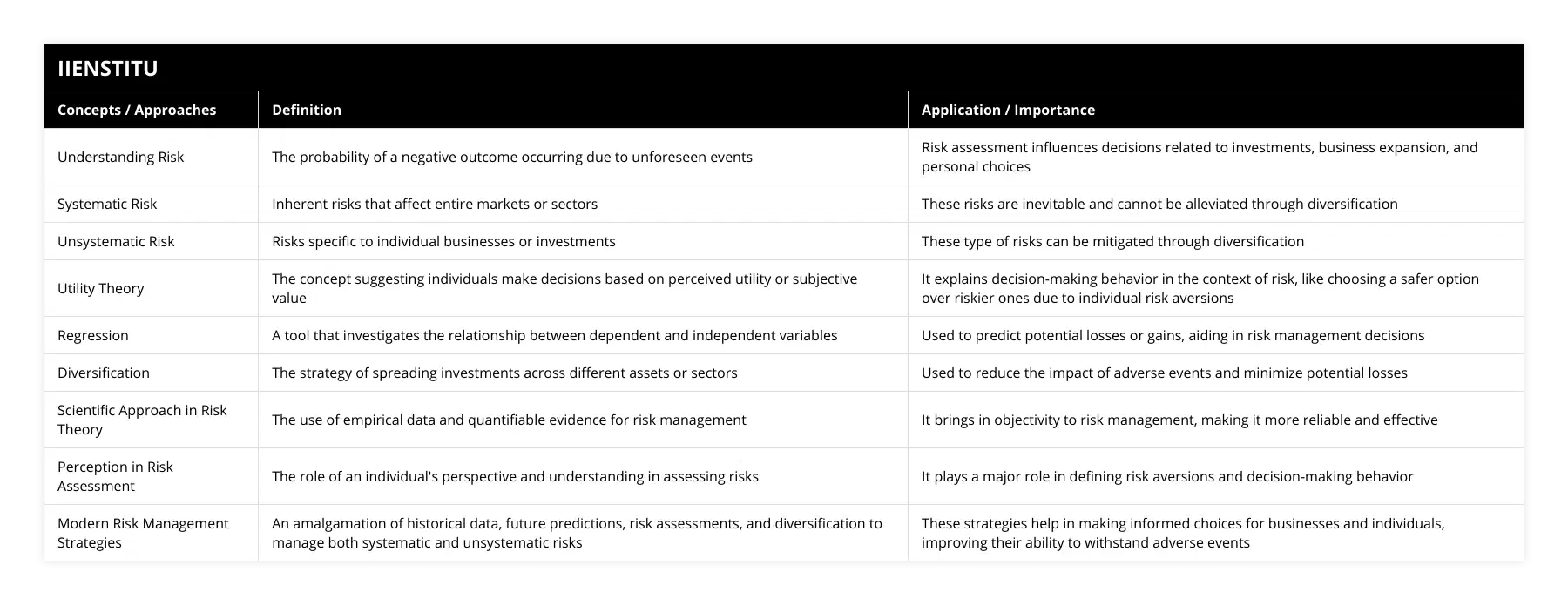
Frequently Asked Questions
What are the key factors that contribute to climate change?
Key Factors Contributing to Climate Change
There are several key factors that contribute significantly to climate change. The most significant is the burning of fossil fuels such as coal, oil and natural gas. When fossil fuels are burned, they release greenhouse gases like carbon dioxide and methane into the atmosphere. These greenhouse gases trap heat from the sun, causing global temperatures to rise.
Deforestation is another major factor. Trees absorb and store carbon dioxide. When forests are cleared, that stored carbon is released. Deforestation also reduces the number of trees available to remove carbon dioxide from the air. Between 2015 and 2020, the world lost over 4 million hectares of forest per year.
Intensive livestock farming generates significant greenhouse gas emissions. Cows and sheep produce methane as part of their digestive process. Large scale cattle ranching leads to deforestation too. The livestock sector accounts for around 15% of global emissions.
Other contributors are fertilizers containing nitrogen and the burning of biomass. Overall, human activities are responsible for almost all of the increase in greenhouse gases over the last century. To mitigate climate change, we must transition from fossil fuels to renewable energy and prevent further deforestation. We must also reduce emissions from agriculture and other sources.
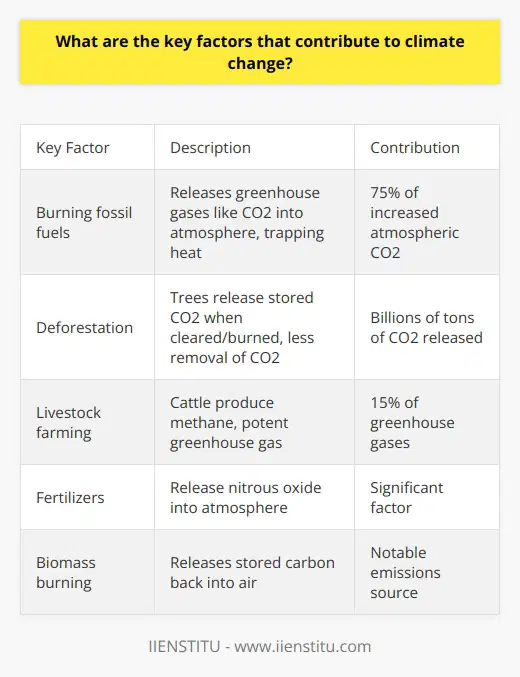
How does gender inequality manifest in different cultures?
Manifestations of Gender Inequality
Gender inequality refers to unequal treatment or perceptions of individuals based on their gender. This manifests in various ways across cultures. In many cultures, traditional gender roles cast women as caregivers and men as leaders. This leads to inequalities in domestic duties, employment, and positions of authority. For example, in parts of South Asia, women spend much more time on unpaid domestic work than men. In Saudi Arabia, strict laws prohibit women from traveling or working without a male guardian's permission.
Gender discrimination in education also perpetuates inequality. In Afghanistan, girls face barriers to attending school including lack of facilities, child marriage, and Taliban restrictions. Only 37% of Afghan girls complete primary education, compared to 66% of boys. This lack of education limits women's ability to participate in society.
Violence against women is another manifestation of gender inequality. Practices like female genital mutilation in parts of Africa, acid attacks in Southeast Asia, and honor killings in the Middle East target and control women. Up to 38% of murders of women worldwide are committed by intimate partners. Laws and enforcement often fail to protect women.
While many cultures have embedded gender inequalities, increased education for women and girls, activism, and legal protections are working to promote equal rights. Achieving gender equality requires changing long-held biases and practices.
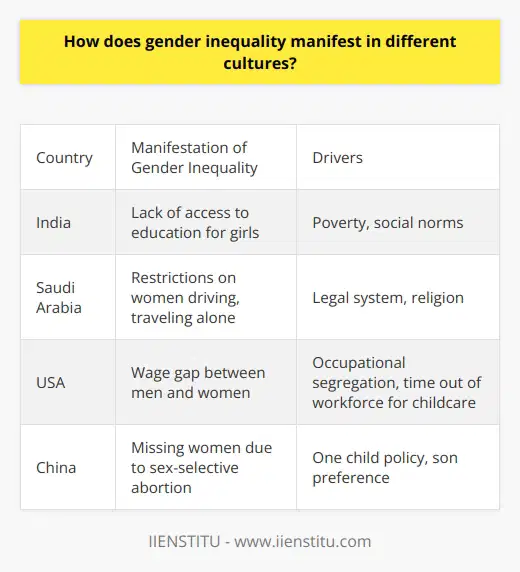
What policies can governments implement to reduce poverty?
Policies to Reduce Poverty
Governments can implement several policies to help reduce poverty. One important policy is to increase access to education. Governments can make primary and secondary education free and compulsory. They can also provide subsidies and scholarships to help low-income students attend college or vocational schools. Education gives people the skills needed to obtain better-paying jobs.
Another policy is to create more jobs and improve wages. Governments can invest in infrastructure and green technology to create construction and manufacturing jobs. They can set higher minimum wages and strengthen unions to improve pay. Policies that support small businesses can also lead to more job creation.
Governments can also strengthen social safety net programs. They can provide cash assistance, food stamps, and housing vouchers to help families meet their basic needs. Healthcare subsidies can make insurance more affordable. Increasing funding for childcare, disability, and unemployment benefits further aids those struggling financially.
Lastly, governments can reform tax policies to ease the burden on lower-income households. They can make tax systems more progressive by increasing taxes on the wealthy. Tax credits like the Earned Income Tax Credit can supplement wages for workers. Reducing regressive payroll and sales taxes helps increase take-home pay.
Implementing a mix of education, job creation, safety net, and tax reform policies can significantly reduce poverty. A comprehensive approach addresses both the symptoms and root causes of financial hardship for low-income families and individuals.
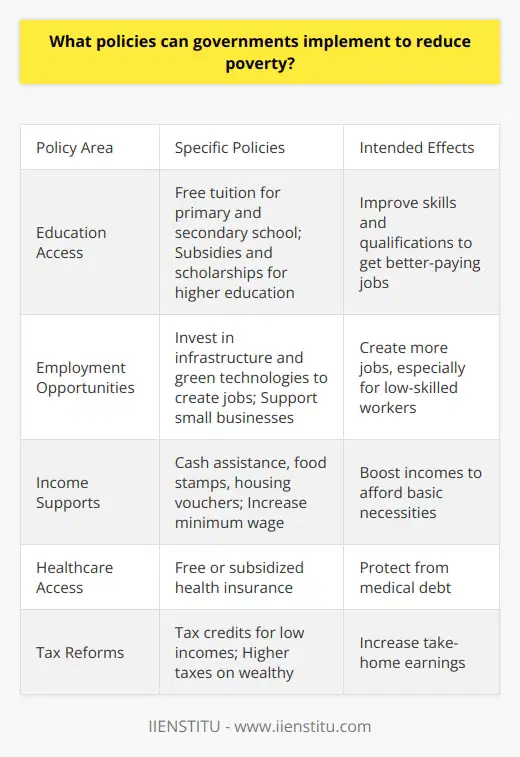
What is risk management and the three theoretical concepts of risk?
Risk management is the process of identifying, assessing and controlling threats to an organization's capital and earnings. The goal of risk management is to minimize the negative impacts of potential losses by implementing strategies to prevent or reduce the chances of those losses occurring. There are three main theoretical concepts that frame how risk is understood and managed: objective risk, subjective risk and socially constructed risk.
Objective risk views risk as an objective hazard or threat that exists independent of human perception. This concept sees risk as quantifiable through statistical analysis and scientific measurement. For example, the risk of a 100-year flood occurring in a certain area can be calculated based on historical data. Strategies to manage objective risk aim to control the probability of the risk occurring through engineering controls, technology, or other physical means.
Subjective risk sees risk as subjective, based on an individual's perceptions, judgments and personal characteristics. How risky something is seen to be can vary widely between different people based on psychological, social and cultural factors that shape risk perceptions. Strategies to manage subjective risk focus on providing information to influence individual's perceptions of risk.
Socially constructed risk views risk as being embedded within social and institutional contexts. Risk is not inherent but rather is created and given meaning through social, political and cultural processes. Strategies to manage socially constructed risks focus on governance, ethics, transparency and engagement with stakeholders to shape collective understanding and management of risks.
In summary, risk management is the process of identifying potential threats and losses, and implementing strategies to control the chances and impacts of those risks. There are differing theoretical concepts of risk as objective, subjective or socially constructed. These concepts frame how risk is understood and consequently how it is managed in different contexts.
How can risk management strategies be used to mitigate potential losses?
Identifying and Analyzing RisksThe first step in developing risk management strategies is to identify potential risks that could lead to losses. This involves analyzing all aspects of an organization's operations, internal processes, external environment, and stakeholders to pinpoint areas of vulnerability. Common risk categories include strategic, operational, financial, compliance, and reputational risks. Once risks are identified, they should be evaluated based on likelihood of occurring and potential impact. Higher priority risks can then be targeted for risk mitigation.
Risk AvoidanceOne risk management strategy is to avoid the risk entirely. This may involve declining high-risk projects, discontinuing certain product lines or activities, or avoiding expansion into markets or geographies that expose the organization to excessive hazards. While risk avoidance guarantees that losses associated with those risks will not occur, it can also mean lost opportunities.
Risk Control Many risks cannot be avoided but can be controlled. This involves taking proactive steps to minimize either likelihood of the risk event occurring or its potential impact. Examples include installing firewalls and antivirus software to prevent cyberattacks, performing regular equipment maintenance to reduce breakdowns, and implementing strong internal controls to prevent fraud. The goal is to reduce exposure to the risk.
Risk TransferTransferring risk shifts financial liability to another party. Common tactics include purchasing insurance policies, outsourcing critical functions to external experts, and requiring suppliers to warrant their products. While these approaches can limit an organization's losses, they do come at a cost. Thorough cost-benefit analysis should determine if risk transfer makes economic sense.
Risk RetentionFor some risks, an organization may choose retention rather than avoidance, control, or transfer. With risk retention, the organization accepts that losses could occur and budgets for that possibility through reserves or contingency funds. Self-insurance is a common method of retaining risk. Companies must ensure they have sufficient capital buffers before embracing risk retention strategies.
Effective risk management requires a holistic approach, using a combination of strategies to protect against potential losses. Organizations should take a proactive stance, constantly monitoring and adapting to emerging risks in a dynamic environment.
What processes are involved in implementing an effective risk management program?
Implementing an Effective Risk Management Program
There are several key processes involved in implementing an effective risk management program in an organization. First, it is important to establish the context by identifying the organization's objectives, defining the external and internal parameters to be taken into account when managing risk, and setting the scope and risk criteria for the remaining process. Next, risk identification involves finding, recognizing and describing risks that could affect the organization's objectives. This can be done using techniques such as brainstorming, checklists analysis, and examining records and reports. The identified risks then need to be analyzed to determine their causes and potential consequences if they occur. Qualitative and quantitative techniques like risk probability and impact assessment can be used for risk analysis.
After analyzing risks, they need to be evaluated against the organization's risk criteria to determine which risks require treatment and their priorities. Risk evaluation involves comparing the level of risk found during the analysis process with risk criteria established when the context was considered. Risk treatment involves selecting and implementing options for addressing risk like avoiding, reducing, transferring or retaining risk. A risk treatment plan should be developed to document how each selected option will be implemented. Risks, their treatment and priorities should be recorded in a risk register.
Implementing the risk treatment plan is an important next step. Risk treatment measures should be integrated into the organization's overall governance, strategy, planning, management and operational processes. Progress in implementing the plan should be monitored and modifications made as needed. Regular communication and consultation with stakeholders is also critical throughout the risk management process. Finally, it is essential to monitor the effectiveness of the risk treatments and conduct regular reviews of the risks and risk management process to identify new risks and make improvements.
In summary, key processes in implementing effective risk management include establishing the context, risk identification, risk analysis, risk evaluation, risk treatment, implementing the treatment plan, communication and consultation, monitoring and review. Following these systematic processes outlined in standards like ISO 31000 can help organizations effectively manage risks and opportunities to achieve their objectives.
What are the three foundational steps common to all risk management approaches?
Risk management is a critical process for organizations to identify, assess, and mitigate risks. While there are various risk management frameworks, most share three foundational steps: risk identification, risk analysis, and risk response.
The first key step in risk management is risk identification. This involves identifying potential risks that could impact an organization's objectives and operations. Risk identification techniques include brainstorming, reviewing incident reports, analyzing financial statements, interviewing subject matter experts, and more. The goal is to develop a comprehensive list of risks based on historical data and future projections. Common risk categories include strategic, operational, financial, compliance, and reputational risks.
The second core step is risk analysis. Here, organizations evaluate each identified risk in terms of its likelihood of occurring and potential impact. Qualitative analysis may involve ranking risks into high, medium, and low categories. Quantitative analysis assigns numerical values and calculates risk exposure. The goal is to estimate the probability and consequences of each risk to determine priority. Risks are often mapped on a heat map with impact on one axis and likelihood on the other.
The third foundational element is risk response. Organizations develop strategies to address each risk based on risk appetite and priority. Common responses include avoiding, accepting, mitigating, sharing, or transferring risk. Avoidance eliminates activities giving rise to risk. Acceptance retains risk at current levels. Mitigation takes actions to reduce risk likelihood or impact. Sharing spreads risk across multiple parties. Transfer shifts risk to third parties through insurance or outsourcing. The response aligns to risk appetite and cost-benefit analysis.
In summary, while risk management methodologies may vary, they share three core steps: identifying risks based on internal and external factors, analyzing risks to determine priority, and defining risk responses to align with organizational risk appetite. Following these foundational elements allows organizations to effectively understand and proactively address uncertainties that could impact objectives.
How can organizations implement an effective risk management program?
Implementing an effective risk management program is crucial for organizations to identify, assess, and mitigate risks. There are several key steps organizations can take to develop a successful risk management program.
Conduct Risk Assessments
A foundational component of risk management is conducting thorough risk assessments. Organizations should hold risk assessment meetings, bringing together leaders from all departments. The goal is to identify organizational vulnerabilities across operations, finances, compliance, strategy, reputation, and more. Risk assessment involves analyzing the likelihood and potential impact of identified risks.
Create a Risk Register
After risks are identified and analyzed, organizations must document them in a risk register. This register categorizes each risk and outlines mitigation strategies. It also indicates the risk owner responsible for managing that risk. The risk register should be continuously updated as new risks emerge and existing risks change.
Implement Controls
Organizations can implement preventative and detective controls to mitigate risks. Preventative controls aim to reduce the likelihood of risks occurring, such as by improving processes, training employees, and installing firewalls. Detective controls help identify when risks have occurred, like conducting audits and monitoring network activity.
Assign Risk Owners
To effectively manage each risk, organizations should designate risk owners. These are leaders responsible for overseeing mitigation strategies for assigned risks. Risk owners track emerging threats, recommend controls, monitor progress, and provide status updates to executives.
Report on Risks
Risk reporting and monitoring is crucial for an effective program. Risk owners can regularly report to executives on risk statuses and mitigation tactics. Organizations can also perform risk audits to identify new risks. Reporting ensures risks are properly managed over time.
In summary, organizations can implement successful risk management programs by conducting assessments, maintaining risk registers, implementing controls, assigning risk owners, and reporting. A proactive approach positions organizations to address emerging threats and safeguard their interests.
What risk management strategies help companies mitigate potential threats?
Identifying and Analyzing RisksThe first step in developing risk management strategies is to identify potential threats and analyze the likelihood and impact of each one occurring. Companies can conduct risk assessments, environmental scans, and scenario planning exercises to detect risks related to economic, geo-political, regulatory, technological, and other external factors as well as internal vulnerabilities. Quantifying the probability and consequences of various risks allows companies to prioritize and focus resources on addressing the most significant ones.
Mitigating RisksOnce major risks are identified, companies can develop strategies to reduce the likelihood of occurrence and potential impact. Avoiding high-risk activities altogether is one approach. Companies may also choose to transfer risks by purchasing insurance policies. Another common tactic involves putting preventive controls in place to proactively detect and address issues before they become larger problems. Companies can also prepare contingency plans and crisis management procedures to minimize damage if disruptive events do transpire.
Spreading Out Risks Diversification helps spread out risk exposure. This can involve expanding into new geographic markets so that weaknesses in one regional economy can be offset by stability in another. Companies may also choose to diversify their products, services, and revenue streams so that challenges in one business area can be counterbalanced by strengths in another. Supply chain diversification through the use of multiple suppliers and distribution channels also reduces overreliance on any single source.
Maintaining FlexibilityStaying nimble and adaptable is critical when operating in an uncertain environment. Companies aim to maintain operational and financial flexibility so they can respond quickly to changing conditions and new information. This may require maintaining extra capacity, redundant supply chains, conservative use of leverage, and sufficient cash reserves. The ability to rapidly scale operations up or down, pivot business models, and change strategic direction helps companies better manage risks.
Fostering a Risk-Aware Culture A strong risk management culture is vital for effective threat mitigation. When risk considerations are deeply embedded into policies, processes, and employee behaviors at all levels, companies can spot issues faster and react in a coordinated way. Ongoing training ensures staff have the skills to uphold standards, follow protocols, and make smart decisions with risks in mind. Senior leadership must clearly communicate risk management priorities and model the desired behaviors.
